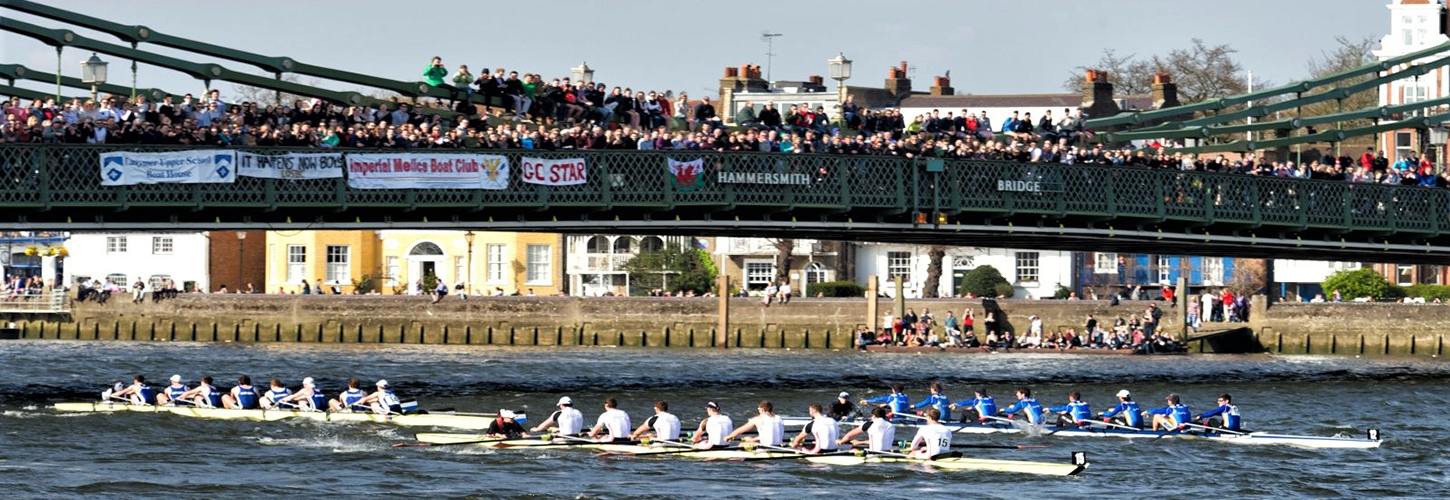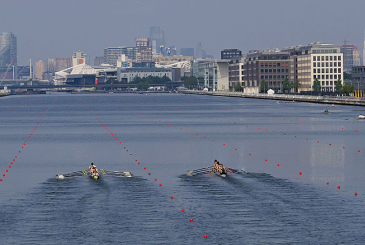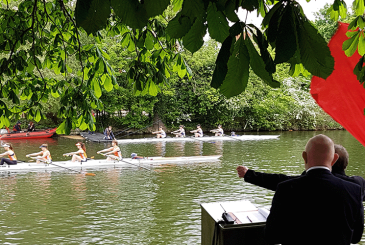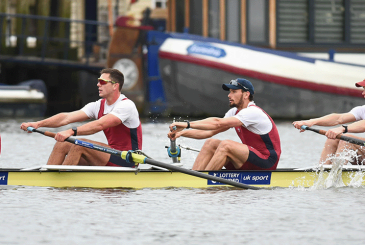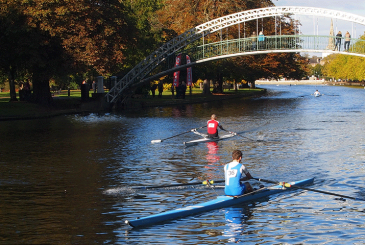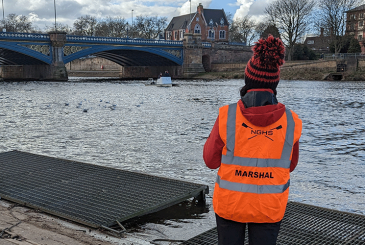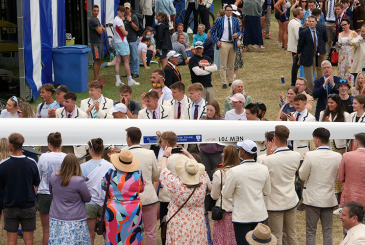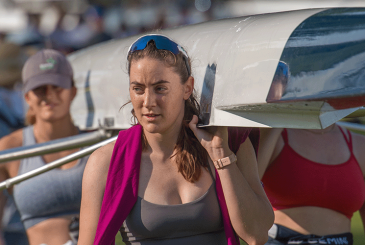Coxing a head race on the Tideway is a real test. 2016 Olympic champion and former GB cox Phelan Hill provides some essential advice
For me the Head of the River Race, the Women’s Eights Head of the River Race, the Schools’ Head and the Vesta Masters’ Head are some of the best races on the rowing calendar.
It was always great to head back and represent my club with the added spice of racing international team-mates, but, equally as important, the Tideway is a fantastic test of any cox’s skills.
Can you steer a good line over the course? Are you able to make the right calls and execute the race plan correctly? Can you motivate your crew at the right time?
The Tideway will test a cox more than any other course: do it well and you can gain your crew places in the final standings, perform badly and you’ll cost your crew valuable time against your opposition.
The Tideway will test a cox more than any other course
Here are three areas to focus on to maximise your performance:
1. Preparing for the big day
Before race day you need to ensure that you’ve covered the basics.
Safety and marshalling
In my opinion, preparation is crucial to a good performance. On race day one of your primary jobs, which is often overlooked, is safety.
The Tideway on race day is a busy place. There can be 400-plus crews on the river at one time and collisions, injuries and damage to equipment can easily happen if you are not prepared and alert.
Before race day, examine all marshalling instructions closely. Be sure to know circulation patterns, your marshalling position as well as the crews around you.
Remember, when marshalling, that the stream moves quickly, so even if you are sitting still you will still be moving relative to the bank, bridges, piers and moored boats – it is very easy to be swept into difficult situations, so stay alert.
Your equipment
You might think this is obvious, but always make sure your own house is in order before dealing with others. So often on race day I’ve seen coxes panicking or telling me their cox box has failed. Ensure that when you go to bed, you have your cox box and any other electronics on charge, and your tools and life jacket. These simple things will ensure less stress on race day.
Kit
Finally – and most importantly – ensure you’ve thought about kit. It can be cold and wet, so if you are doing a pre-race paddle take spare kit – you don’t want to be racing in wet clothes. With regards to race kit, remember a good performing cox is one who is happy and warm. If you are cold and shivering before the race you won’t be in a position to give your best.
2. Steering the head race
So when it comes to steering a Tideway head you’ve probably heard everyone talk about the racing line and the second lamp post at Hammersmith. It might seem daunting at first, but here are a few basics that will get you down the course.
Beginner’s guide to steering
Landmarks, including the three bridges on the course:
- First up is Chiswick Bridge – this is your signal to start getting your crew up to pace. The timing position and start of the race is just the other side of Chiswick.
- Your next bridge is Barnes Railway Bridge – this is roughly three to four minutes after the start, or approximately 1.7km away.
- After half way you’ll come across Hammersmith Bridge – this is probably the most famous and the one where you’ll get most support.
- The final landmark I want to mention is the black buoy, probably nearly as famous as Hammersmith but for different reasons. It marks the start of the line of boats moored at Putney Embankment. You’ve got around 500m left at this point.
The racing line – at the most basic level, if you cannot remember anything else stay in the middle of the river and look to follow the river’s curves; if you manage this and don’t cut the corners then you’ve done a good job.
Advanced guide to steering
When I first started learning more about the racing line, I got all sorts of advice telling me to aim for this chimney breast and that tree line. Steering the head doesn’t have to be like that.
I got all sorts of advice telling me to aim for this chimney breast and that tree line
Here’s a few more advanced tips. I’ve tried to keep it simple:
- After the start from Chiswick to Barnes stay central, perhaps slightly left of middle but always following the curve of the bend as opposed to cutting it.
- Before you reach Barnes Bridge you want to be already starting your turn (10 strokes or so before), leave it late and you’ll end up coming out the bend wide and in slow water.
- After Barnes Bridge you can easily end up in ‘no man’s land’ as the river widens, again stay central and hold this line as you approach the beginning of the long Surrey Bend (right-hand side).
- Once you reach Chiswick Eyot, stay close to the island, then at the end of the island make sure you don’t cut the bend – it’s easy to do, so you need to resist. Stay wide and central.
- As you get close to Hammersmith, it’s time to find that lamp post. Stay wide then head for the second lamp post from the right-hand buttress.
- After this your run is easy. Stay to your right (a third of the river’s width from the right-hand bank) all the way home. It’s really important that you don’t start drifting to the middle now and as you reach Fulham FC and the finish is in sight, make sure you stay wide – and I mean wide! Stay a third to your right as the water to your left is particularly slow compared to the stream.
- Once round the bend, you’re on the home stretch with the black buoy and the mooring of boats ahead.
Train how you want to race
If all this seems too much, just remember:
- From Chiswick to Hammersmith stay in the middle.
- From Hammersmith to the finish keep a third of the river to your right, two-thirds to your left.
3. Race calls and race planning
Keep it simple! Don’t try and rewrite somebody’s rowing style in the race, execute what you do in training. Train how you want to race.
- Keep your race calls clear and concise.
- Remember to give time between calls to allow the rowers to digest.
- Structure your race calls, based on your race plan.
I’ve mentioned the race plan, so let’s get started. The head can be anything from 17 to 20-plus minutes long. That’s a long time to be talking and you can easily start repeating yourself.
Personally, I like to break the race down into phases, each phase having a clear objective. Here’s an example of how you can structure it.
Sample race plan
Phase 1: The start – Chiswick to Barnes
At the start everyone is excited – it’s time to race, look to get your crew out with intensity. In this first phase you need to have calls which transition your crew from the intense start to the race rhythm; and once there, tell them! “Yeah, this is it, this is our rhythm… Rhythm NOW.”
Phase 2: Race rhythm – Barnes to Chiswick Eyot
You’ve had the start, you’re though Barnes, but the finish is still a long way off. This is where your training comes in. When it comes to racing you should have built up a number of calls, themes that work for your crew in training: this is the time to use them! “Good rhythm guys, keep pressing out the finish… READY… GO!”
Phase 3: Race rhythm ‘top up’ – Chiswick Eyot to Hammersmith
There’s still plenty of race left. You need to stay on top of your crew here, keeping the rhythm strong, keeping the technique high. “Remember our training, we need to keep pressing out the finish, stay on our rhythm… FINISHES… GO!”
We can catch the crew in front, we’re moving on them!
Phase 4: Hammersmith to Barn Elms
This is the time to be more motivational, encouraging the crew when they are tired, but most importantly keeping it simple! “Yeah guys, doing well, keep pushing the legs. We can catch the crew in front, we’re moving on them!”
Phase 5: The finish – Barn Elms to finish
You’ve got under 1,000m to go now so this is the time to push them on, raise the rate and drive them home! “Black buoy, 500m to go. UP ONE… GO!”
Finally… best of luck racing!
Phelan Hill steered the GB men’s eight to gold at three successive World Championships and the Rio 2016 Olympic Games, having won a bronze medal at London 2012.
Check out this video on Steering the Tideway with Phelan Hill and Sophie Shapter and these tips for rowers.
Photo credit: Gerard Brown.


